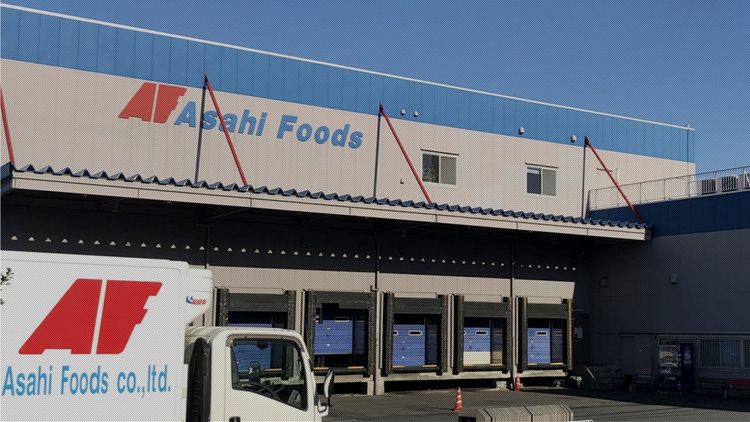Japan Airlines Co., Ltd. (JAL) and Setouchi Town in Kagoshima Prefecture will jointly establish a drone operating company called Amami Island Drone Co.,Ltd. in 2023. The company will launch a new drone business to support disaster prevention and logistics on the remote island of Amami Oshima, using five high-performance weather IoT sensors called "Soratena" to help determine whether or not to operate the drones.
We interviewed Masaki Okano-san of Amami Island Drone Co.,Ltd. (seconded from Japan Airlines Co., Ltd.) and Yusaku Hadano-san of Air Mobility Creation Department, Japan Airlines Co., Ltd. about the specific use of observation data in the drone business that supports island life.

Airlines and local governments cooperate to commercialize a remote island model of drone logistics.
Setouchi Town, located 450 km southwest of the Kagoshima mainland, consists of the main island (population approx. 7,000) and three "outlying islands": Kakeroma Island (Kakeroma-jima, approx. 980), Yoro Island (Yorojima, approx. 60), and Uke Island (Ukejima, approx. 90). The only means of transportation to the outlying islands is by ferry or other vessels from the main island. Sailing to the islands was often impossible due to stormy weather, making stable logistics and response to natural disasters a challenge.
The ocean travel is time-consuming, and once a typhoon strikes far out in the Southern Ocean, even if the skies overhead are clear, high waves can cause the voyage to be cancelled. Furthermore, depending on the weather conditions, the voyage may be cancelled for several days, delaying the delivery of medicines and daily commodities to the islanders. In addition to delays in the transportation of goods, there is also the problem of isolated villages, which is unique to remote islands in times of disaster. Therefore, the town of Setouchi and JAL have been working for about three years to develop a practical drone logistics service as an alternative to shipping to solve these local problems," says Okano-san.


Precise weather data is essential for out-of-sight and remote operations to distant islands.
Amami Island Drone's mainstay is a large logistics drone with a maximum speed of 72 km/h and a maximum payload of 15 kg, known as a "light truck in the sky. It operates eight round-trip flights per month on two routes from the Tean heliport on Amami Oshima to Yoro Port on Yoro Island and Ikeji Port on Ikejima. Specifically, the aircraft loads cargo on the main island, flies automatically, lands at Yoro Port or Ikeji Port, automatically leaves and distributes the cargo, and returns to the main island.
This large logistics drone flies using advanced drone operations known as "out-of-sight, remote, automated operations. The pilot monitors the onboard camera images, position, speed, fuel, and other data sent from the aircraft at the base station, as well as weather data for the departure and arrival points, and performs manual operations as necessary. This advanced drone operation is based on JAL's expertise in safe operation cultivated through its aviation business.

The base station does not choose its installation location as long as a communication environment is available. Currently, the Amami Island Drone base station is located at the JAL headquarters in Shinagawa, Tokyo. For the remote pilot who is responsible for daily operations, precise weather information is indispensable for safe drone operation. The drone's airframe performance is set at 5 mm or less for precipitation and 10 m or less for wind speed at landing. In particular, wind speeds exceeding even 0.1 m are considered to make takeoffs and landings impossible, so precision is required. Also, the maximum load capacity decreases as the temperature rises, so we pay attention to the weight of the cargo when it is hot," says Okano-san.
Therefore, in order to be able to measure accurate weather data, from the testing phase, we utilized a small weather IoT sensor called "Soratena," which observes multiple weather elements such as temperature, rainfall, and wind speed every minute.
Currently, a total of five units are installed at three locations: Tean on the main island, the departure point of the regular route; Yoro Port and Ikeji Port, the arrival point; and two locations, Kuji on the main island and Seo on Kakaroma Island, in case of a disaster.

In addition to checking forecast data on rain, wind, and temperature the evening before and the morning of the day of the flight, we also check observation data before takeoff to make final decisions on whether or not to operate and when to fly.

"Ferry cancelled due to high waves, but drone delivered safely when the winds subsided." On February 29, 2024, the first flight of the drone business, the waves were so high that the regular ferry was cancelled. Despite this, the drone took off at the right time when the winds subsided. Departing from the main island, the drone landed safely on Yoro Island, about 18 km to the southwest, completing the delivery of the supplies.
It takes about one hour and 20 minutes to get to Yoro Island by regular boat, but a drone can reach the island in about 30 minutes, one-third the time it takes by boat. Using highly accurate weather data, we have proven that even in rough weather, we can safely take off and land when the wind dies down," says Okano-san.

Daily commodities currently delivered by drone include medical supplies and newspapers to residents on remote islands, and school lunch ingredients, including fresh food, to elementary and junior high schools. In the event of a disaster, we are also looking into emergency transportation of water, food, and other emergency supplies and relief goods. However, when an emergency occurs, we will not be able to respond immediately even if we try to fly a drone for the first time. It is necessary to establish an operational system that is prepared for emergencies even under normal circumstances. From the perspective of disaster prevention, we believe that drone delivery is important to support daily life," says Okano-san.
In this way, the use of weather data is helping to solve the problems of remote islands, such as logistics for daily life and disaster prevention, with the air mobility of drones.
We want to analyze the accumulated observation and flight data to expand the possibilities of air mobility.
It has been about six months since drone logistics began operating on a regular basis, and he says he hopes to focus on regional revitalization and sustainable community development in Setouchi Town in the future.
Currently, pilots like Okano-san, who was transferred from JAL to Amami Island Drone Company, are in charge of remote control. In order to develop the company as a drone operator rooted in the local community, both in name and reality, we are promoting human resource development and training of pilots so that local people can take charge of drone operations. We hope that this kind of support will help the drone business in Setouchi Town grow and create employment opportunities," said Hadano-san.
He also feels that the air mobility business is expanding in analyzing the operational data that is accumulated daily. He says, "By analyzing past observation data and actual flight data, we should be able to propose optimization of routes, timing of flights, and cost aspects of transportation. By leveraging our experience in drone operations and knowledge of safe flight operations, JAL envisions expanding Amami Island Drone's business and, by extension, supporting the social implementation of drone operations throughout Japan," said Hadano-san.
Now that the social implementation of drone-based logistics has begun in earnest, the potential of precise weather data x air mobility is immeasurable.
































